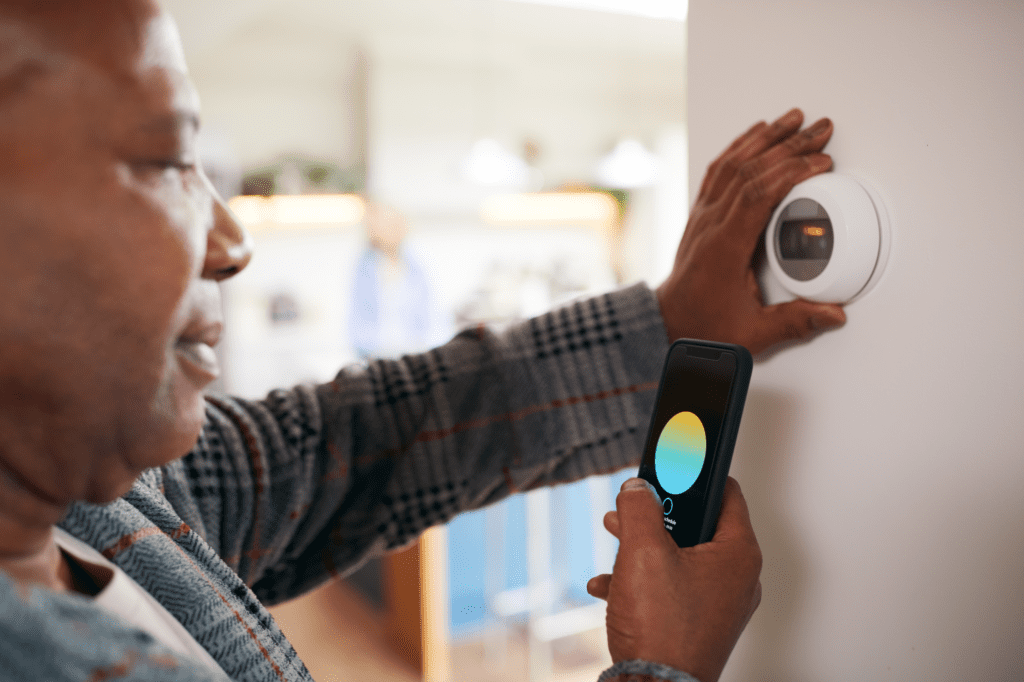Four policy steps can help advance AC-to-heat-pump swaps.

With major benefits and low or feasible costs, AC-to-heat-pump swaps are a compelling pathway for carbon savings to help meet the state’s CLCPA goals. Four policy steps can accelerate these swaps and advance heating electrification in the 2.4 million homes with central AC in New York State.
1. Replace every central AC with a heat pump when it breaks.
Issue
Central heat pumps have minimal market share, and AC replacements are often overlooked as a heating electrification opportunity. AC-to-heat-pump swaps could catalyze electrification in 45 percent of New York State’s single-family homes, with straightforward retrofits and enormous incentives that make heat pumps cost-competitive or even lower cost than the alternative. While some program guidance promotes AC-to-heat-pump swaps, stronger policy levers are necessary to seize this largely untapped opportunity.
Recommendation
Explore the development of a mandate to accelerate central heat pump adoption when ACs are replaced in New York State’s single-family homes. Options include time-of-replacement requirements in construction codes and prohibitions on sale and distribution that effectively mandate heat pumps in lieu of central ACs in most or all cases. Policy design should focus on equipment cost gaps and how to optimize heat pump sizing for heating capability while addressing feasibility and affordability concerns—potentially including requirements tailored to climate zones.
Even legislative language that only requires ACs to have a manufacturer-installed reversing valve to provide heating—in other words, requiring a heat pump sized at least for cooling—would bring enormous benefits at minimal cost, such as:
- More efficient cooling in the summer;
- More efficient, cleaner heating for shoulder seasons and warmer winter days—possibly year-round for homes in Climate Zone 4;
- Greater building resilience that reduces the urgency of a fossil-fuel heating system failure in winter;
- Increased familiarity with heat pumps for New Yorkers—a capable but new technology; and
- Lower carbon emissions to help New York State meet its climate goals.
- Denver: Denver, Colorado—a city with a similar cold climate to New York in IECC climate zone 5—already issued a ban on one-way ACs starting in 2025 through the city’s Building Code. The law requires any replacement of an existing air conditioner to be electric equipment capable of also providing space heating, in effect mandating AC-to-heat-pump swaps at the time of replacement.
- Colorado: Colorado state lawmakers introduced a bill in 2024 proposing to ban the sale and distribution of central ACs manufactured after 2027, with an exception for units with a manufacturer-installed reversing valve to also provide heating. A new law also requires Colorado’s Energy Office to assess the feasibility of a technical standard for central ACs as a means to accelerate heat pump adoption. Study findings are due June 2025.
- California: California’s new 2025 Green Building Standards Code (CALGreen) allows local governments to enact requirements when central ACs are replaced in existing single-family homes. While not a statewide mandate, the code enables jurisdictions to adopt rules that require either a) any replacement of a central AC to be a heat pump capable of being the home’s primary heating source, or b) any new central AC installation to meet strict criteria. The voluntary code provisions include caveats for some climate zones and for homes that need significant equipment size or electric upgrades.
2. Increase incentives for duct improvements to maximize year-round heating capability.
Issue
Duct improvements and even outright replacements may be necessary for some central heat pump retrofits, particularly to meet the full heating load in old homes in New York State’s colder areas. Limited incentives for duct improvements mean the cost of these upgrades may stand in the way of homeowners sizing a heat pump for year-round heating.
Recommendation
Maximize the number of homeowners who choose heat pumps sized for full heating load by increasing incentives for supplementary duct improvements. The Clean Heat program now provides a major driver for full electrification by limiting incentives to heat pumps sized for at least 100 percent of a home’s heating load. Paired with air sealing improvements that lower peak load, additional incentives that scale with the higher costs for retrofits involving partial or full duct replacements will catalyze homeowners who might not otherwise make the leap to full electrification. And with about 850,000 central ACs due for replacement in New York State today, larger ductwork incentives could help seize a fleeting opportunity to maximize carbon savings and accelerate heat pump adoption in line with the state’s 2030 targets.
Recent updates to the EmPower+ program—available for low-to-moderate-income New Yorkers—included an extra $5,000 for projects that require the replacement of at least 50 percent of a home’s ductwork. But few or no ductwork incentives appear to be available for market-rate homeowners in the Clean Heat utility program manuals.
In some cases, the repair, replacement or relocation of ductwork to support winter heating can quickly get expensive, with significant upgrades costing up to $10,000 or even more. This hurdle could make or break the decision to go from a traditional central AC replacement to a fully-sized central heat pump. Additional support for significant duct improvements, including for market-rate homeowners, could advance heating electrification in New York State.
3. Target homes best primed for AC-to-heat-pump swaps.
Issue
Consumers, contractors and HVAC installers will naturally default toward status quo AC replacements in the absence of a clear and compelling pathway to heat pumps. Program and incentive budgets are limited and most efficiently spent targeting customers who are good candidates for a straightforward retrofit with a heat pump that can meet all heating needs and save money on utility bills.
Recommendation
Develop policy, programs, marketing and outreach to prioritize homes where AC-to-heat-pump swaps are easiest and most financially beneficial. Homes that stand to benefit the most can be identified by factors like region, home size and age, heating fuel type, income eligibility, and previous participation in state clean energy and efficiency programs.
Key characteristics make fully-sized central heat pump retrofits more feasible and appealing. Policy and program targeting should prioritize some or all of the following factors:
- Region: Over 90 percent of New York State’s homes with central AC are in Climate Zones 4 and 5, where heating load is smaller and fully-sized heat pumps are more cost-effective.
- Home size and age: Upfront costs are typically lower in smaller homes because they require smaller, less expensive equipment to meet heating and cooling demand. And houses built to more recent energy codes are less likely to require ancillary work like panel upgrades or duct improvements.
- Fuel type: Utility savings pencil out best in homes currently using fuel oil, propane or other expensive heating sources.
- Income eligibility: Thanks to generous incentives, many LMI homeowners can install a fully-sized heat pump for less than the cost of a traditional central AC replacement, and some can do so at no cost at all after incentives.
- Previous program participation: Homes that have already undertaken weatherization will have lower heating loads, which translates to lower installed costs for heat pumps. Homes that have already installed solar panels will likely have lower electricity costs that translate to lower winter utility bills.
Finding homes where these conditions overlap can help decision-makers target policy, programs, incentives and outreach to maximize heat pump adoption. For example, homes on Long Island that currently heat with fuel oil and were built to more recent energy code standards are ideal candidates for AC-heat-pump swaps from both a cost and carbon savings perspective.
4. Bring more data to the market.
Issue
Very limited data exists to guide the industry and policymakers seeking to strategically ramp up heat pump installations over time. More robust information on the baseline condition of New York State homes and on previous central heat pump installations would help inform the market and shape effective policy.
Recommendation
Add new queries to New York’s Residential Building Stock Assessment to illuminate the baseline condition of electrical infrastructure and ductwork in New York State homes. Both can be crucial to understanding the cost of a central heat pump retrofit, which in turn will shape policy and programs.
Increase transparency of statewide program data from Clean Heat, Clean Energy Hubs and other relevant sources, either through utility filings or a centralized electrification tracking dashboard. Aggregated, anonymized data on central heat pump projects could help identify total retrofit costs as well as costs for equipment, labor, duct improvements, electrical work and weatherization. These costs could be differentiated by variables like home age and size, equipment size, climate zone and pre-retrofit heating source. Better data will help optimize policy and programs and inform decisions by homeowners, contractors and installers.
